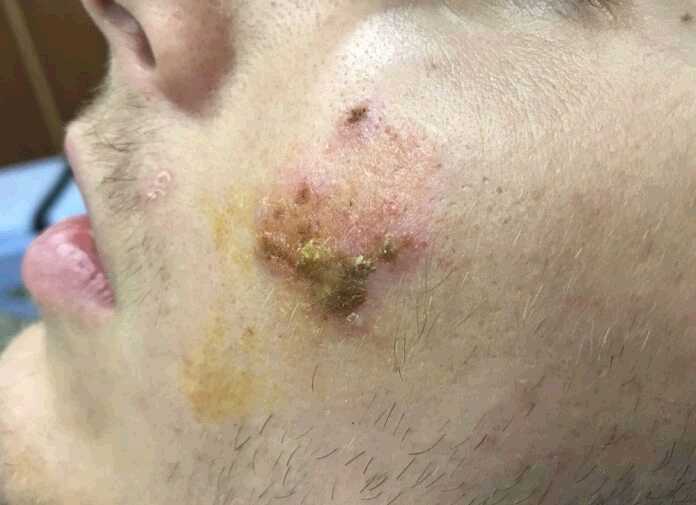
Impetigo is a skin infection commonly caused by Staphylococcus (staph) and Streptococcus (strep) bacteria. Symptoms include a rash with small blisters or scabs. While impetigo can affect just about anyone, it is most common in toddlers and young children. This contagious condition is mostly spread by direct contact with someone who already has the infection. Towels, clothing, toys, or other household items can also harbor the bacteria causing impetigo. Luckily, an impetigo infection is more of a nuisance than a serious condition.
Types of Impetigo
- Nonbullous: This more common form of impetigo starts with small red papules–rounded bumps rising from the skin similar to pimples or insect bites. These papules turn to small pus-filled blisters known as pustules that scab over with a honey-colored crust. The lesions usually form around the nose and face, but could also affect the arms and legs. Both strep and staph bacteria can cause this type of impetigo.
- Bullous: Staph bacteria is solely responsible for bullous impetigo. Blisters form when the bacteria causes a separation between the top and lower layers of skin. The blisters fill with a yellow-colored fluid and often break leaving red, raw skin with ragged edges. After breaking, a dark crust usually develops which will eventually disappear during the healing process.
Diagnosing and Treating Impetigo
A primary doctor can diagnose impetigo with a clinical observation. It’s important to have a doctor look at the affected area to ensure it is not herpes, cold sores, chicken pox, poison ivy or another skin infection.
Once diagnosed, treating impetigo is pretty straightforward. The doctor typically orders a prescription-strength antibiotic ointment along with a gentle cleansing of the sores. In more severe cases, an oral antibiotic may be necessary. The healing process should begin in a few days. Since impetigo is usually a superficial skin infection, there is little chance of permanent scarring.
Preventing Impetigo
Good hygiene is essential to preventing impetigo. If your child or someone close to you is diagnosed with this bacterial skin infection, make sure you wash hands with warm, soapy water regularly. Keep your child away from social situations like daycare or play areas. In addition, make sure any items the infected person comes in contact with like clothes, towels, toys, and sheets are washed and sterilized.
Impetigo can cause the skin to itch. Scratching could spread the infection. Doctors suggest covering the infected areas with gauze and tape, especially for smaller children. Make sure all medications are taken as directed and skin is kept clean.
With proper care and hygiene, the ugly rashes of an impetigo infection will be nothing more than a memory in a week or two.






























